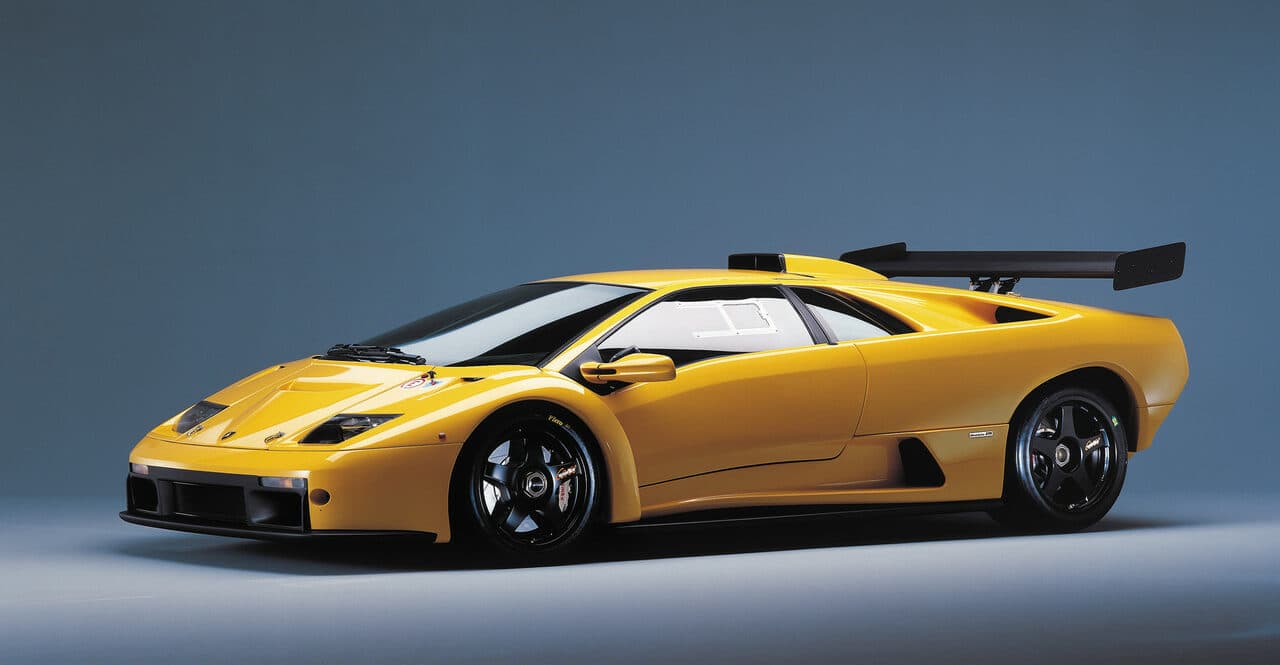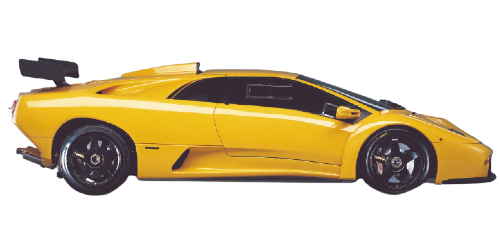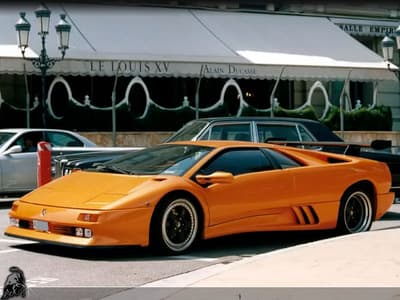Automobili Lamborghini SpA has always been synonymous with high performance and exclusive designs. In 1999, during the Geneva and Bologna Motor Shows, Lamborghini unveiled a pair of astonishing cars that pushed the boundaries of performance, design, and exclusivity even further: the Diablo GT and the race-ready evolution of it, the Diablo GT-R.
Limited to just 80 cars, the Diablo GT was an exclusive Gran Turismo vehicle with a breathtaking top speed of 338 Km/h. Unveiled during the March 1999 Geneva Auto Show, it set the stage for the even more radical evolution that was to come.
The Diablo GT-R: The True Successor to the SVR
In late 1999, at the Bologna Motor Show, Lamborghini showcased the Diablo GT-R, the race-oriented variant of the GT. Limited to only 30 units and never legal in the United States and Japan, this car was a masterpiece ready to compete in the Lamborghini Supertrophy, organized by the Stephane Ratel Racing Organisation.
The GT-R was the natural successor to the Diablo SVR, with a significant power bump of 50 Bhp, totaling 590 Bhp, setting new boundaries in the Supertrophy races.
Race-Oriented Design
The Diablo GTR was designed with racing at its core. A fully integrated roll-over cage, massive rear wing bolted directly onto the lightweight chassis, and full Brembo race specifications on the brakes with Lucas-controlled ABS ensured that this car was built to perform on the track.
Astonishingly, the top speed of the GTR was set at 348 Km/h, driven by the 6-Litre V-12 engine that produced 590 Bhp, transmitted to the lightweight magnesium Speedline 18-inch rear wheels.
Engine Technology
The V-12 engine’s power was obtained through a multi-throttle intake manifold, variable intake valve timing system, dynamic air inlet duct system, and titanium connecting rods. Further enhancements were made through a specially tuned race-oriented exhaust system and a reprogrammed engine management system.
Additional cooling systems were implemented for the gearbox and differential oil to ensure that the exotic V-12 engine could withstand the demands of racing.
Aerodynamics and Body
Almost the entire body of the GTR was made of Carbon Fibre, except for the steel roof for torsional strength and aluminum doors for safety reasons. Magnesium wheels designed for both standard tires and Pirelli racing slicks and special racing calipers for brakes contributed to the overall race appeal of this car.
Interior and Safety Features
Stripped of all unnecessary items, the interior was designed purely for racing. The lightweight Carbon-Fibre bucket seat with a six-point racing harness, race-type steering wheel, and obligatory fire extinguisher system from Momo was tailored to the needs of professional racers. Plexiglas side windows and air intakes further contributed to weight reduction.
Suspension and Handling
The suspension geometry of the GTR was altered to allow the car to be even closer to the ground, and an emergency cut-off switch was mounted to enhance safety.
Pricing and Conclusion
Priced at $310,000, the Diablo GTR is more than just a car; it is a symbol of Lamborghini’s relentless pursuit of perfection. With its raw power, cutting-edge technology, and race-bred design, it stands as a testament to Lamborghini’s ability to push the boundaries of automotive engineering.
The Lamborghini Diablo GT-R remains an iconic vehicle, and a true reflection of the commitment to excellence that has come to define the Lamborghini brand. It is not just a car, but a piece of history and a beacon of what is possible when passion meets innovation.




